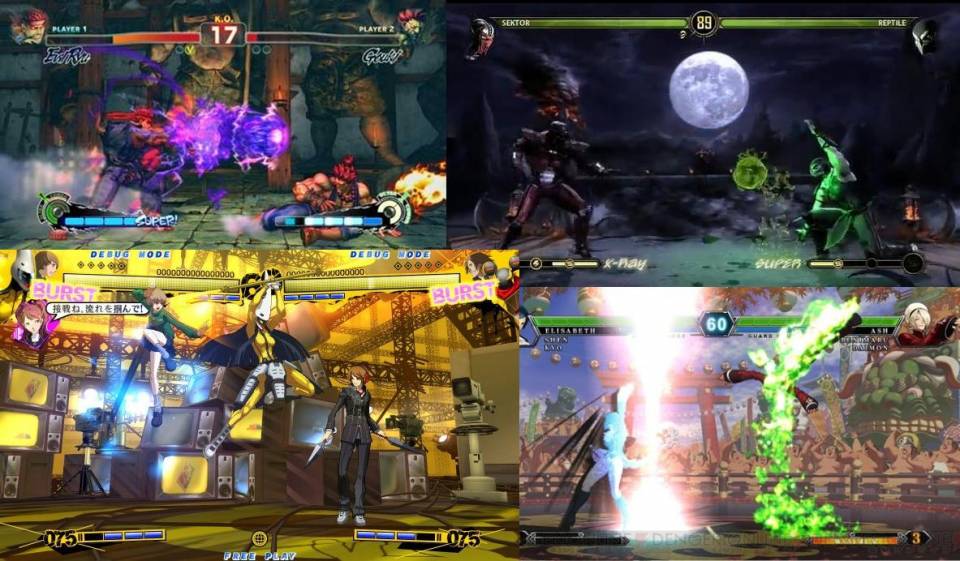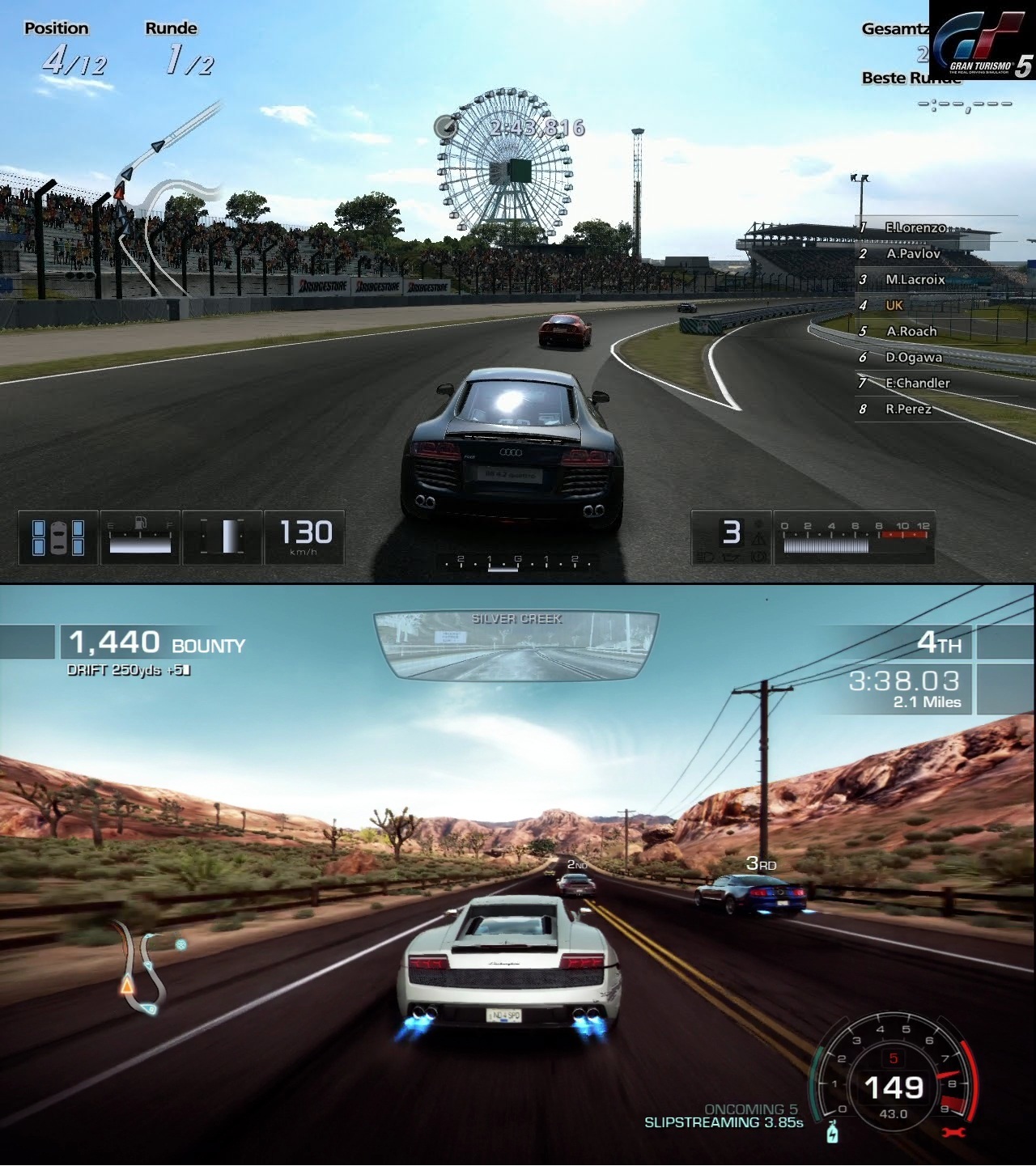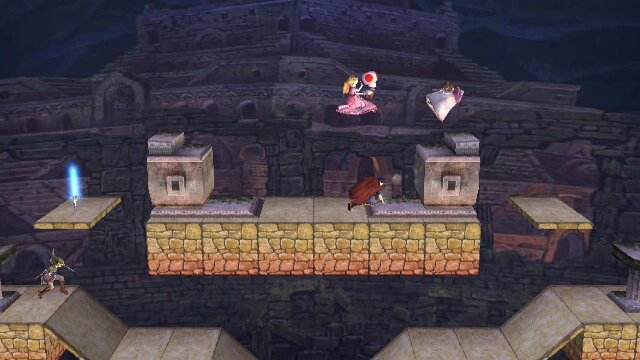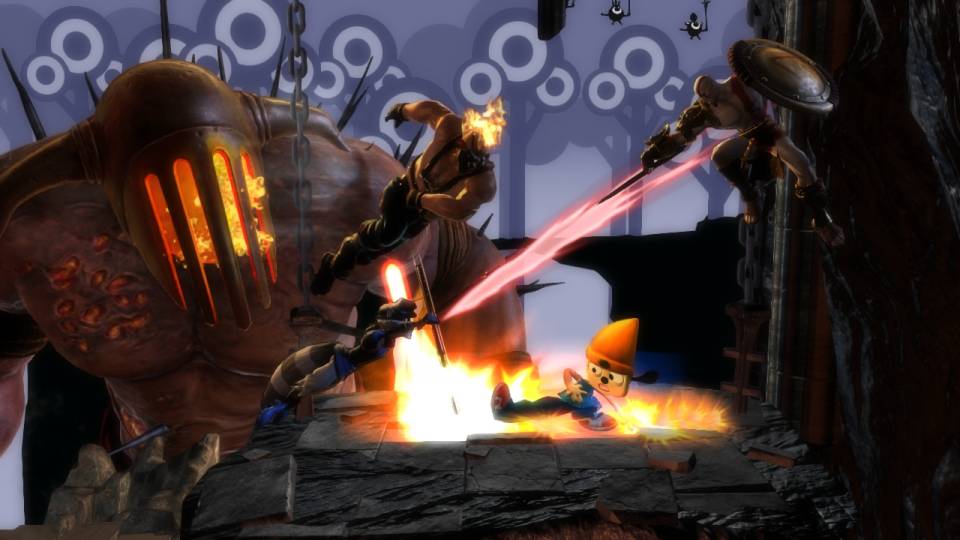Playstation All-Stars: How Mechanics Define Games Within a Genre
By StarvingGamer 46 Comments
Ripoff n. a blatant or unscrupulous copy or imitation
Last week the internet was jostled by Kamiya and his condemnation of Playstation All-Stars Battle Royale (PAS) as a rip-off of Smash Bros. This blew my mind. I've always respected Kamiya as a mechanics guy, I mean look at the way his games play. As someone who gets his kicks digging deep into systems, the myriad ways that PAS is decidedly NOT a rip-off of Smash seem glaringly obvious. So Hideki Kamiya, allow me to educate you.
Parallels within a genre
As the medium has grown, genres have been free to develop their own sets of best practices, various bits of design that remain a near constant between games regardless of developer. Take the fighting game genre for example. Pick up any fighting game from the past decade and chances are you're going to have two life bars on top, a timer in between, and more often than not a pair of super meters in the bottom corners. On your controller up will jump and down will crouch. For defense you're either going to be holding back or a dedicated block button.
Throws will beat blocks, blocks will beat attacks, and attacks will beat throws. Attacks will be divided into start-up, active, and recovery frames. Your character will have a hitbox and a hurtbox. And more likely than not, at some point you will be rolling your directional pad/joystick from down to down-forward to forward and pressing a button to get an attack. Bonus points if that attack happens to be a projectile and you used it to truncate the recovery animation of your previous attack.

Pick up any racing game and you know which shoulder button to press for gas and for brake. Somewhere on the screen you're going to find a minimap giving you a preview of the upcoming track. These things have become standard for a reason, because they work and they work well and they work best. You know what happens when a current-era-army-shooting-from-a-first-person-perspective game comes out and LT/L2 ISN'T ironsights. People throw a fit, and for good reason.
That's the great thing about working in an established genre. You have the work of thousands of people trying to make the best experience possible to use as reference. Ignoring that collective wisdom would be irresponsible and, quite frankly, stupid.
Of course the PAS situation is a little bit trickier. Outside of Power Stone (and a few blips not worth mentioning *koff* Onimusha: Blade Warriors *koff*), the arena fighting genre has been largely defined by a single franchise, Super Smash Bros. While quantity shouldn't matter, this significantly smaller playing field makes it easier to make comparisons and cry foul. But if we look a little closer, we can see that the mechanical divide between PAS and Smash is actually so large that in a more crowded category, each game could be considered part of a different sub-genre.
How are they similar?
Of course that isn't an entirely accurate assessment. In fighting games it has always been easier to split them up as 2D vs. 3D. But what about a genre where no matter the style of game, the playing field is going to be more or less the same like say, the driving genre?
Modern driving games are interesting in that, no matter their race, color, or creed, they're always going to be played from the same perspective. Whether it's carting, arcade, or simulation, the camera is going to be placed behind and slightly above the vehicle (with an optional cockpit/hood cam thrown in on occasion). The gas button and analog stick/D-pad will always be your primary way of interacting with the game liberally seasoned with brake or e.brake, boost, and shoot buttons. There will always be a mini-map somewhere on screen to let you know about your current position and a timer during race events.

The same parallels exist between PAS and Smash. Both games are played from a pulled-out side view of a 2d playing field. Your analog stick controls your movement and you use your buttons to whip out attacks, blocks, and grabs. On the bottom of the screen space is allotted to inform players of their current status as well as the status of their opponents. But that's where the games diverge.
What makes them different?
So how do you differentiate games like these? Much like the above example of GT5 vs Hot Pursuit, it comes down to mechanics.
In GT it's all about playing conservatively and controlled, following your line and waiting until the perfect moment to make a pass. Similarly, Smash is a position-based game that favors intelligent defensive play. Because of the % system, the only hit that really matters is the last one that scores the KO. This means that you actually derive more of a strategic advantage from avoiding combat altogether
In a 4-man FFA, every time you hit an opponent three players benefit: yourself and your two other opponents. In the cold calculus of the battlefield you are working to give a total of +2 advantage between your opponents while only earning +1 advantage for yourself. The deficit this leaves you at is compounded by the fact that you are now at risk of taking hits yourself which benefits all of your opponents. Tactical play of Smash involves avoiding conflict and pushing your opponents toward conflict with each other (made especially easy in a game designed around attacks that knock your opponent away), taking safe potshots from far away, and waiting for the crucial moment when you can swoop in and land a decisive smash.

On the flip side, Hot Pursuit is much more about aggressive risk-taking: drifting, oncoming, near-miss madness to build up boost to go even more dangerously fast. PAS is capturing a similar feeling by making the change from % based ring-outs to a super-meter system. Under this system, the one player benefits when you hit your enemy: you. Also the downsides of getting hit are significantly smaller since you're only worrying about the enemy doing the hitting getting closer to their own KO's, not every enemy on the field.
In a way, this almost makes PAS more true to the names Brawl and Melee. This focus on maintaining an effective offense is facilitated further by the introduction of combos. Unlike Smash where almost every attack is a one-off sort of thing that knocks your opponent away and allows them to reset to a neutral state before you can follow up, characters in PAS will be able to execute true combo strings of multiple attacks keeping your opponent in hit-stun. Sony even went as far as to include an infinite prevention system in the game. That's how far these combos might go.
It's almost as if PSA is MvC3 and Smash is a version of MK9 where every non-special attack is an uppercut.

In conclusion (TL;DR)
All the games in the Smash series are great, and a lot of that comes from intelligent design in terms of UI and controls. It's true that Sony borrowed a lot from Nintendo in this regard to make PAS, but game genres are incestuous as all get-out so this should come as no surprise. When you take a moment to consider the mechanics and the different ways they influence gameplay it should become clear that PAS is no more a ripoff of Smash than MK is a ripoff of SFII than Burnout is a ripoff of Gran Turismo.
Fuck man, video games.
